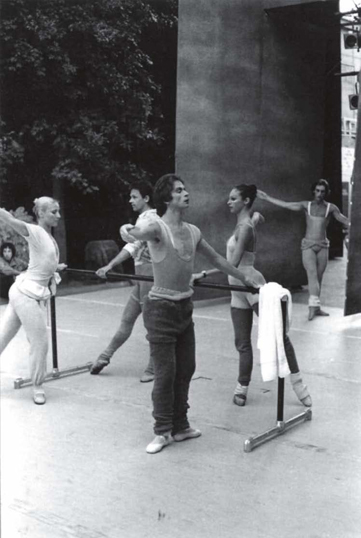Part of John Carey's recent review of Julie Kavanagh's Nureyev: The Life for The Times has sparked a tiny tempest. In struggling to explain why he found Kavanagh's book wanting, Carey writes the following:
It should be a joy to read. So why is it not? The fault lies in [Kavanagh's] subject. Describing ballet in words comes down, essentially, to long, precise accounts of where people put their arms and legs, and this has severe limitations as reading matter. Further, ballet is mindless compared to other arts – as mindless as, say, football – and this restricts what can be written about it. Despite its fusillade of detail and its grand narrative sweep, Kavanagh’s book does not contain, in all its 800 pages, a single idea – not, that is, a single new or interesting thought about the physical or metaphysical universe. It is impossible to imagine the biography of a novelist or a painter or a scientist about which this could be said. But with ballet it is difficult to avoid, and the consequence is, intellectually, a howling wilderness, swept by gales of trivia, scandal and society gossip.
Writer and reviewer John Appleyard
posted this on his blog in response:
John Carey says a very odd thing in his review of a biography of Rudolph Nureyev - 'Ballet is mindless compared to other arts - as mindless as, say, football - and this restricts what can be written about it.' It's odd because I don't know what he means by 'mindless'. A great deal of mind goes into football and an incredible amount, some of it quite lucid, can be written about it. Much more mind would seem to go into ballet and much more can be written, most of it very lucid, about it. Perhaps he means ballet provides a more visceral hit than most arts. But that isn't true either. All art has to be, to some extent, visceral to work at all. Perhaps he means ballet is very abstract. But some is and some isn't and, anyway, abstraction is easily written about. I give up. Can somebody tell me what Carey is on about?
To argue that ballet does not require an extraordinary amount of mental effort and constant analysis of technique and performance to achieve even a rudimentary level of proficiency (let alone world-class status) seems like a foolhardy proposition. So let's assume Carey doesn't mean that.
Setting that aside, then, it seems to me that the crux of Carey's point is this comment:
Kavanagh’s book does not contain, in all its 800 pages, a single idea – not, that is, a single new or interesting thought about the physical or metaphysical universe. It is impossible to imagine the biography of a novelist or a painter or a scientist about which this could be said.
Not to defend Kavanagh's writing (I haven't read her book, yet), but is not the idea that Nureyev's life embodies—the idea that excellence and transcendence can only be achieved through total devotion to one's art, despite the consequences to one's personality and personal relationships—an interesting thought? It worked for Faust.
Thanks to
Brendan McCarthy for links and commentary.
LATE ADDITION:
Carey is not alone in his thoughts about the "mindlessness" of ballet. Just spotted this in
Joan Acocella' review in
The New Yorker:
It seems to me, for example, that there was a connection between Nureyev’s lack of moral feeling and the general unintelligence of his work—both his performances and his productions. And just as he had an entourage of yes-men, or yes-women, standing between him and the world, so there was a huge cliché machine surrounding him, an endless flow of effusions about how he was a lion, a tiger, a wild thing. Nureyev, and the “Nureyev phenomenon,” did not appeal to our higher instincts.
Acocella, at least, seems to confine the "mindless" judgments to the work of Nureyev alone, and not to all ballet.





